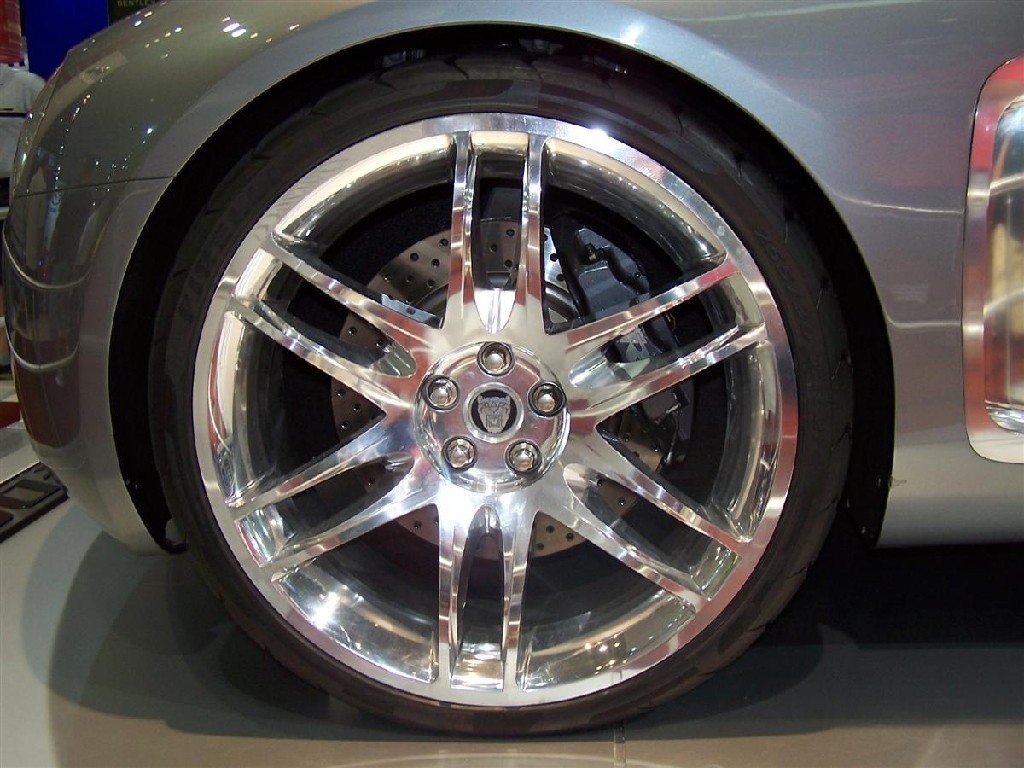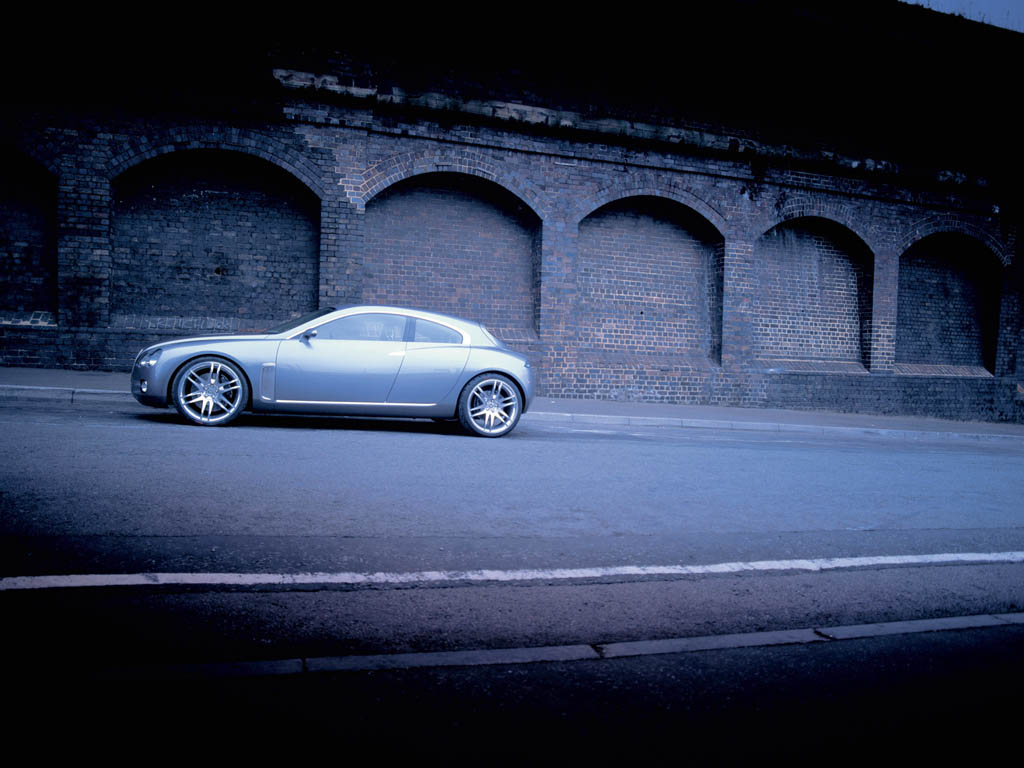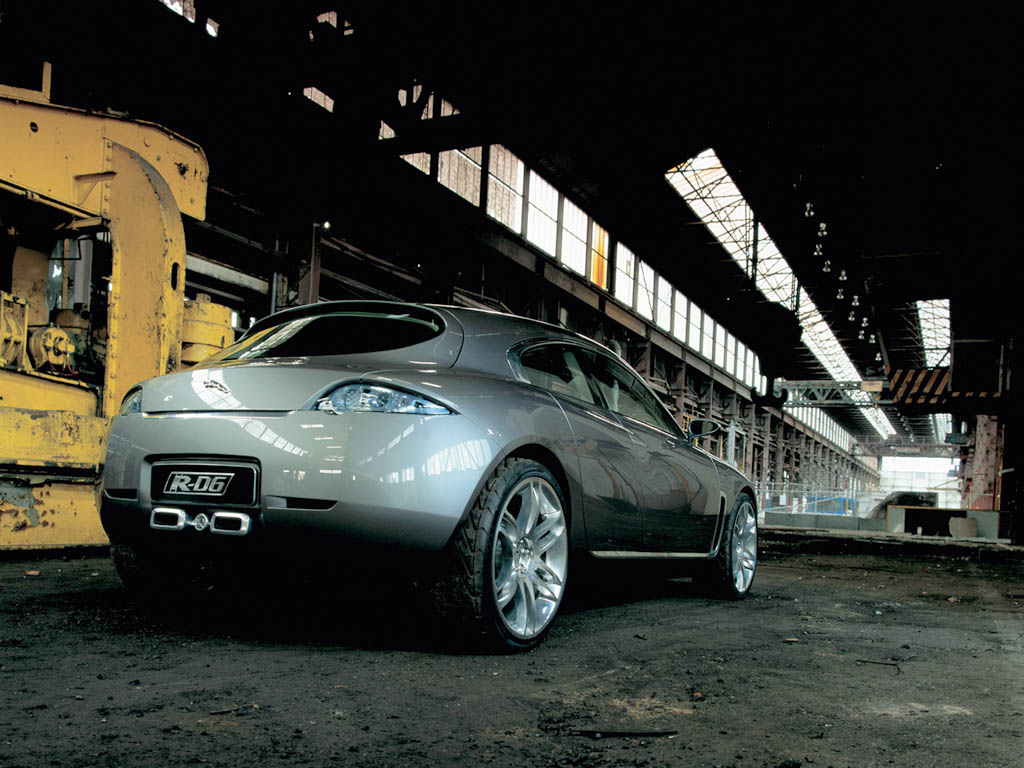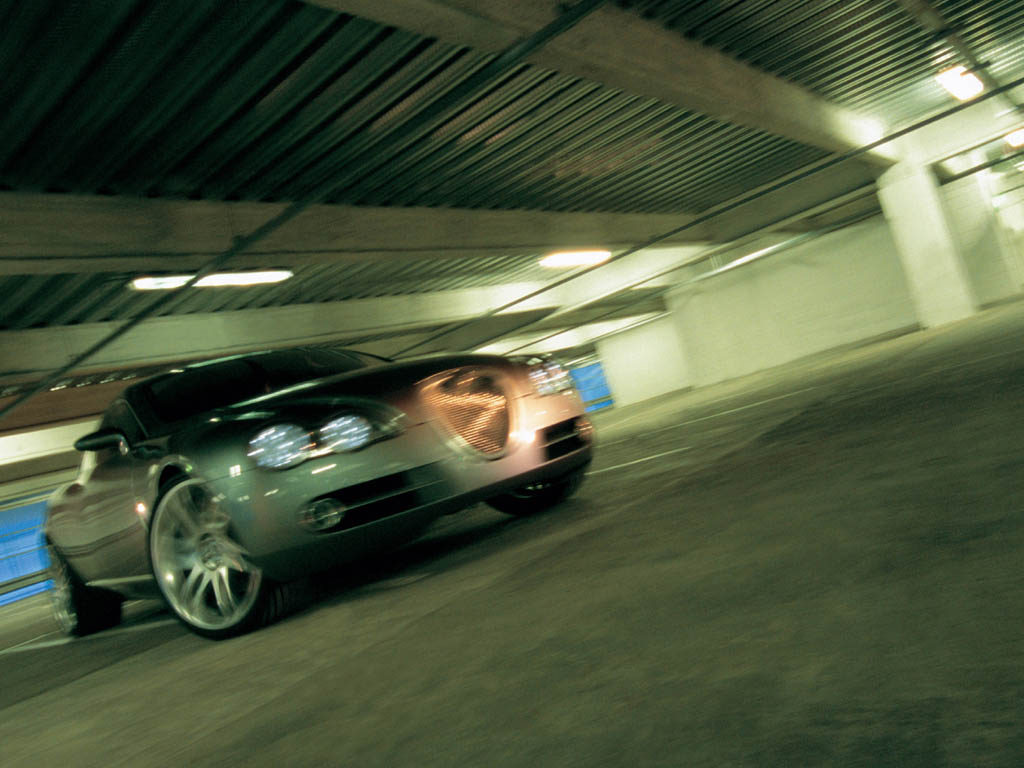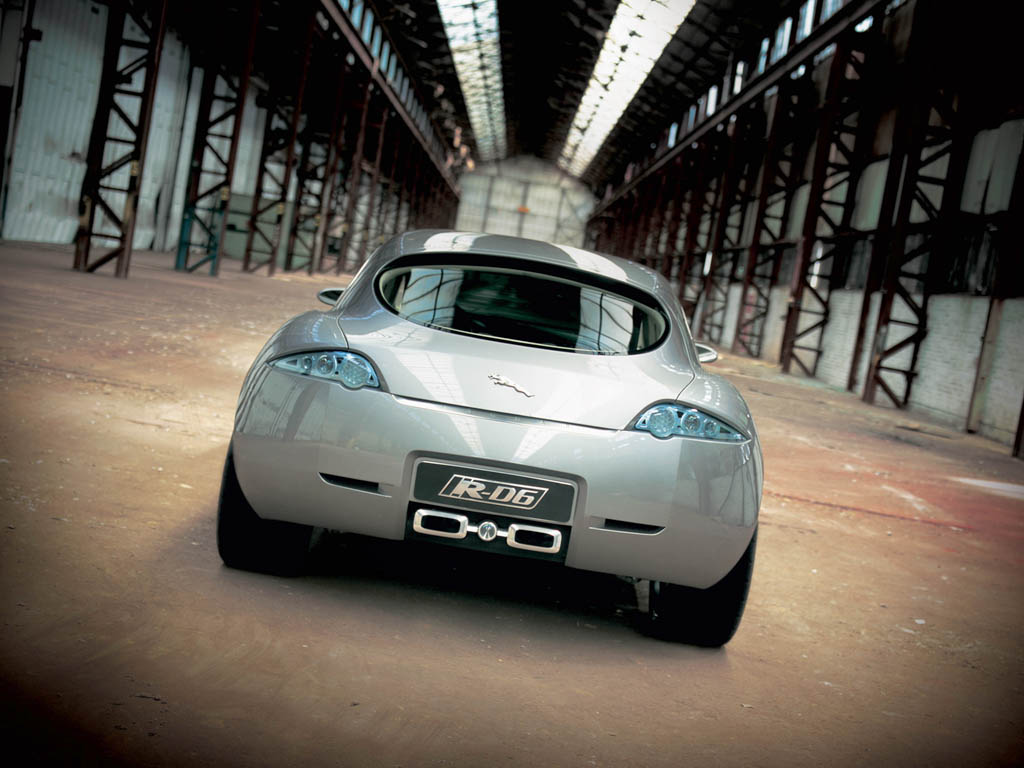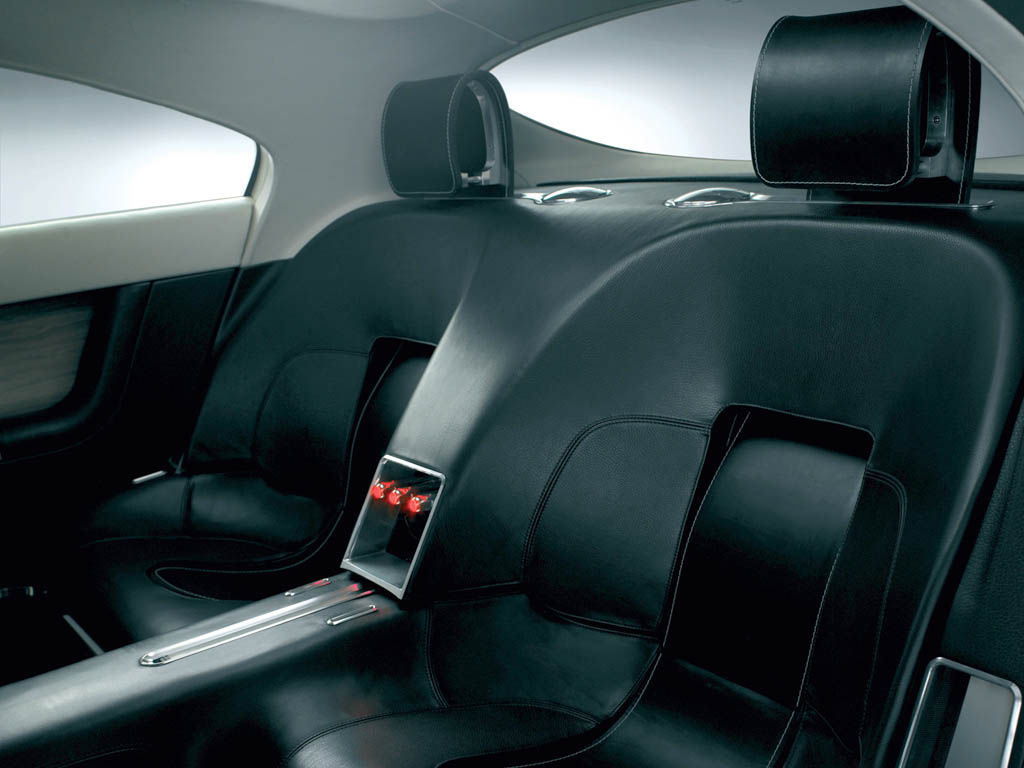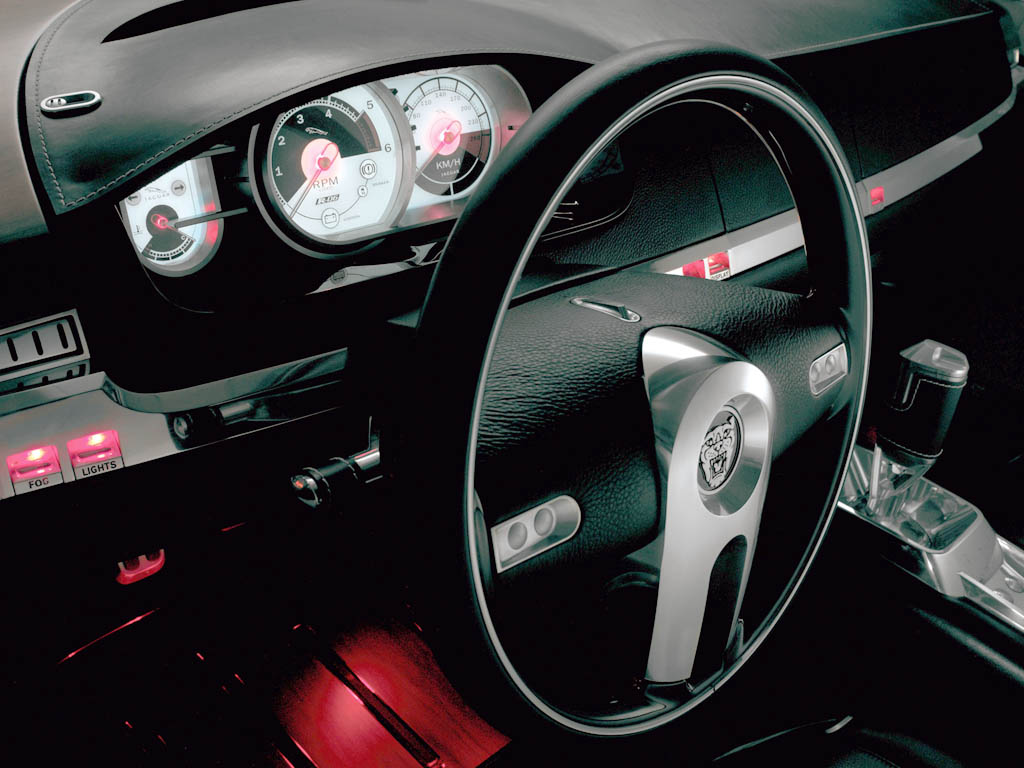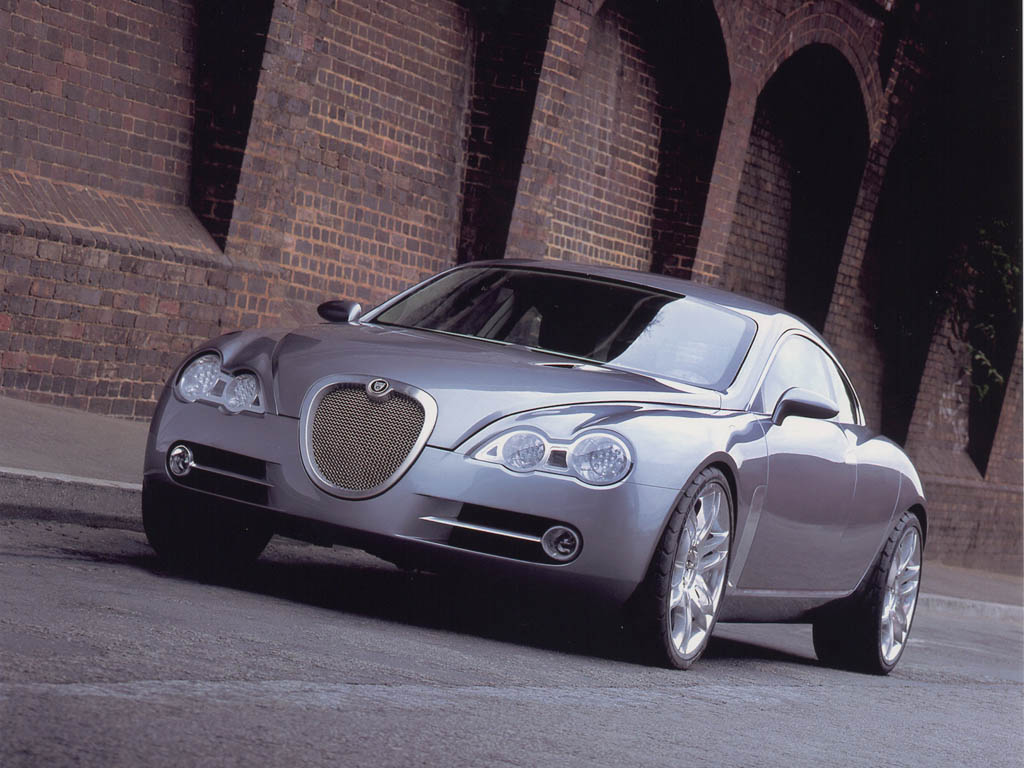2003 Jaguar R-D6 Concept
R-D6 also takes advantage of Jaguar’s lightweight structure strategy, as pioneered in the new XJ saloon. Using aluminium and composite materials for the chassis and body, R-D6 weighs just 1500kg. This allows it to capitalise on the power – and, more importantly, the torque – delivered by its V6 engine.
And it’s the engine that will surprise many people – although, when you think about it, a high-performance 2.7-litre diesel engine makes perfect sense. Confirming Jaguar as a potent new force in the world of large-capacity diesels, the bi-turbo V6 is a tuned version of the engine that will make its debut in the S-TYPE in 2004. With horsepower in excess of 230bhp and a massive 500Nm of torque, the V6 diesel engine endows R-D6 with the pace to satisfy its looks and R-Performance rating. Acceleration from standstill to the benchmark 60mph takes less than six seconds. Top speed is an electronically limited 155mph.
THE BODY
Its distinctive blend of attributes inherent in the Jaguar psyche – emotional engineering, stimulating performance, intelligent technology and downright sexy design – makes R-D6 instantly recognisable as a true Jaguar. But the styling of the car – its lines and shapes, its sheer presence – heralds a design direction that makes no apologies to past, present or future.
At 4,330mm long, R-D6 is 342mm shorter than Jaguar’s smallest car, the X-TYPE saloon – and 760mm shorter than an XK8 coupe. The compact length of R-D6 is aided by short overhangs front and rear (800mm and 695mm respectively) and is achieved with a wheelbase of 2,840mm.
To ensure R-D6 is a true four-seater, the design team refused to compromise on width or height (2,150mm and 1,390mm) but succeeded nonetheless in crafting a beautifully compact coupe that has all the road presence – and more – that you expect of a Jaguar.
The headlights reveal a fresh interpretation of the twin-lamp style featured by Jaguars so successfully – and naturally – for many years. Both front and rear lights use LED technology to deliver the best possible function while maintaining beautiful form.
For many, though, it will be the details that make R-D6 so irresistibly attractive. Details such as the flush-mounted door handles, which pivot on the front edge to activate an electrical actuator that opens the door; the centrally mounted twin-pipe exhausts; the aluminium boot finisher engraved with the Jaguar script; or even the Leaper on the back of the car.
THE STRUCTURE
The aluminium chassis of R-D6 is similar to that of the new XJ and is constructed using many of the same advanced technologies – with all the accompanying advantages, including outstanding strength, robustness and durability in a true lightweight architecture.
Castings such as the front suspension turrets have also benefited from techniques used in the new XJ, while the body is of aluminium and composite materials.
R-D6 rides on 21-inch wheels, machined from solid aluminium specifically for this car. They are shod with unique, ultra-low-profile Pirelli tyres: 255/30 R21 on the front and a massive 275/30 R21 on the rear. Look through the spokes of the beautiful wheels and you’ll see Jaguar R-Performance discs and callipers.
THE HEART
The all-new diesel engine that powers R-D6 encapsulates the spirit of Jaguar today and at the same time reinforces the promise of its future. Due to make its debut in a production Jaguar – the S-TYPE – in mid-2004, the 2.7-litre V6 features twin turbochargers and the latest, high-pressure, common-rail direct injection, making it among the most advanced high-performance diesel engines in the world.
Innovations such as a Compacted Graphite Iron (CGI) cylinder block – which provides outstanding strength and durability as well as weighing less than a traditional cast iron unit – allied to state-of-the-art electronic engine control systems have given Jaguar the engine that the marque, and many thousands of potential customers, have been waiting for.
For R-D6, the 24-valve engine is tuned beyond road-going levels, but central to its design is the need to deliver all the power, refinement and spirited performance that Jaguar drivers demand. The V6 diesel engine that today brings a concept car fully to life will, in less than a year, be putting a smile on the face of Jaguar customers.
THE INTERIOR
To appreciate fully the interior of R-D6 takes a while. The materials in the cabin are a blend of classic with a contemporary twist and modern bordering on the futuristic. And as you would expect from Jaguar, there are a couple of refreshingly idiosyncratic touches…
Aluminium features extensively in both milled and formed guise. Two types of leather – lightly grained, carbon-black aniline and 8mm thick black saddle leather – are used throughout the interior. Satin-finish Black American Walnut veneer complements the Piano Black gloss veneer that was introduced on the new XJ.
Probably the best way to visualise the interior of R-D6 is to imagine yourself sitting in the luxurious, moulded composite driver’s seat, your back supported by a ‘spine’ of tensioned leather that weaves through the structure of the seat and then loops forward at the top to provide an integral head restraint. The seat is constructed with internal ducts to allow heating or cooling according to driver preference.
To one side of you is a door featuring aluminium and two types of leather, and in the centre a section of the American Walnut wood veneer that runs from the front to the rear of the cabin. Controls for motorised movement of the seat are integrated into the recessed armrest. Open the door and a formed aluminium surround is visible, integrating a Jaguar-embossed leather kick-plate.
Your feet rest on wood, which again runs from front to rear. In the area immediately below the seats and extending partially into the footwell, the wood is obscured by a ‘floating floor’ of tensioned thick saddle leather that ‘flows’ over the transmission tunnel and is also visible at the outer edges of the cabin floor. The 25mm gap between the leather and the wood, aided by apertures in the latter, forms part of the climate-control system.
Where it tops the transmission tunnel, the leather is inset with an aluminium gearshift surround. The milled aluminium lever itself – which operates a six-speed manual transmission – is located in an aluminium, domed hemisphere in place of a traditional soft gaiter.
If all of this is detail, it is the view straight ahead from the driver’s seat that shows exactly what sort of car R-D6 is. Pride of place goes to the dial pack, encased in aluminium and inherently sports-focused. The tachometer is positioned centrally, with the speedometer smaller and to the right. To the other side, in an adjoining ‘pod’, are the usual fuel and temperature gauges and other warning lights. All the dial faces have a white ceramic appearance and R-Performance branding, and a milled aluminium rear-view mirror looks perfectly at home. This blend of racetrack and luxury road styles is typical of R-D6 and emphasises its seductive nature.
A broad, solid aluminium ‘switch beam’, topped by an aniline leather-trimmed lower instrument panel, runs across the facia. It is broken in the centre by a cover for the navigation and ‘infotainment’ display screen, revealed when the cover swivels backwards into the instrument panel. The touch-sensitive screen, developed by Alpine Electronics, features unique ‘Shutter LCD’ technology that allows passengers to watch a moving image = for example, a DVD – while the driver sees only the essential driving functions: navigation, climate-control etc.
The facia hood – which stretches back to a veneered wood surround at the base of the windscreen – is of black saddle leather, which is again designed to give the appearance of being a ‘floating’ structure.
Surrounded by such contemporary opulence and yet aware of the fact that this is actually a compact sports coupe, it is no surprise for a driver to find a three-spoke, tri-material (aluminium, leather and Piano Black wood) steering wheel and drilled aluminium foot pedals. Both are a natural choice.
The rear cabin of R-D6 is equal in style and comfort to the front. Two individual seats are accessed via rear-hinged doors, and passengers are treated not only to comfortable, moulded seats, but also to a surprising amount of room.
When the rear seats are unoccupied, the entire assembly can slide forward to almost interlock with the front seats. This doubles boot capacity, but here’s the really clever bit: the boot floor is a two-layer design, with the upper layer – and, of course, any luggage placed on it – moving forward with the seats to save you having to reorganise the boot.
The side-hinged tailgate, the style of which will be familiar to anyone who has owned a Jaguar E-type coupe, is as practical as it is stylish, allowing rear headroom to be optimised.
And what of those idiosyncratic Jaguar touches?
Interior lighting is usually provided by clear glass courtesy lights, but R-D6 is altogether more passionate, with ambient floor lighting activated when the door opens to provide a welcoming, deep red glow.
But the ‘hidden’ feature you will touch every time you get in the car is secreted in the top of the gearshift, below a swivelling top piece. Much like the safety-catch on a gun – or the top of a fighter aircraft joystick – this covers a silver button with a very important duty. Press it and the V6 engine – and the R-D6 – springs into life. Just the kind of dramatic touch you’d expect of a Jaguar.
In Detail
| engine | Diesel V6 |
| position | Front Longitudinal |
| aspiration | Bi-Turbo |
| valvetrain | 4 Valves per Cyl |
| displacement | 2700 cc / 164.8 in³ |
| power | 171.5 kw / 230 bhp |
| specific output | 85.19 bhp per litre |
| torque | 500 nm / 368.8 ft lbs |
| body / frame | Aluminum & Composite Body |
| front tires | 255/30 R21 |
| rear tires | 275/30 R21 |
| front brakes | Discs |
| f brake size | mm / in |
| rear brakes | Discs |
| r brake size | mm / in |
| length | 4330 mm / 170.5 in |
| width | 2150 mm / 84.6 in |
| height | 2150 mm / 84.6 in |
| gear ratios | :1 |
| top speed | ~249.4 kph / 155.0 mph |






